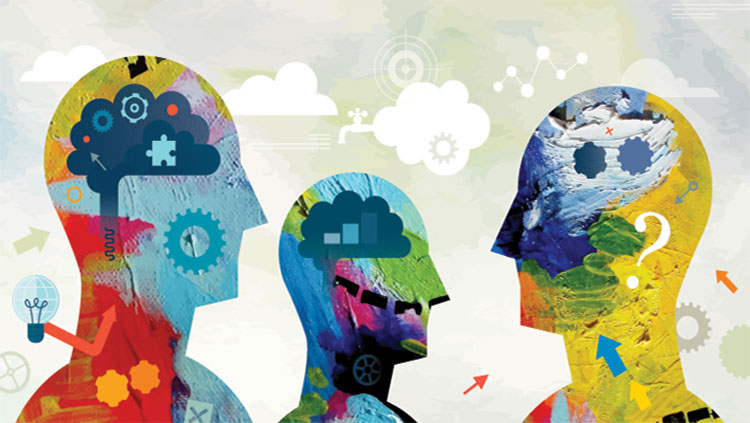Week 7: Neuroscience + Art
As a cognitive science major, I find the topic of how art can challenge and engage a one's cognitive processes and vice versa to be very intriguing, as it is right at the center of my field of study.
Throughout this course, I have found that art and science have one main thing in common: understanding the human experience. In this case, art -- with its ability to evoke emotions and challenge perceptions -- offers a unique platform for exploring the intricacies of the brain and its responses. Neuroscience provides scientific insights that can serve to deepen our understanding of artistic processes and aesthetic experiences (Blaszczyk).
This is also known as neuroaesthetics, an emerging field that investigates the neural basis of artistic experiences -- and in doing so, provides insights into the scientific vs cultural aspects of art appreciation and creativity (Frazzetto and Anker).
An aspect of this week's topic that I found particularly intriguing was the way biological patterns or structural forms in the brain resemble unrelated objects or patterns in the natural world, striking as inspiration for artists. By challenging these predictive neural mechanisms, art can disrupt established patterns of perception, leading to novel insights and aesthetic experiences (Pepperell). For example, images generated by BrainBow, a technique used to visualize neuron wiring that operates via fluorescent proteins in neurons (Vesna), can be seen as artistic representations of the brain's complex neural networks. They can serve as inspiration for artists and evoke wonder at the intricacies and beauty of the mind.
Another such example is Suzanne Anker's MRI butterfly, an "animation set to music employing the MRI digital prints. By animating the photographs, the moving image produces a dance of thought, similar to the way the brain receives data," (“MRI Butterfly by Suzanne Anker”). This superimposition of a butterfly on a brain scan is a prime example of how neuroscience and technology serve as an inspiration to artists.
Works Cited
Blaszczyk, Connie. “3Q: The Interface between Art and Neuroscience.” MIT News | Massachusetts Institute of Technology, news.mit.edu/2019/3-questions-sarah-schwettmann-interface-between-art-and-neuroscience-0416. Accessed 19 May 2023.
Frazzetto, Giovanni, and Anker, Suzanne. “Neuroculture.” Nature Reviews Neuroscience, vol. 10, no. 11, 2009, pp. 815–821, https://doi.org/10.1038/nrn2736.
Pepperell, Robert. “Connecting Art and The Brain: An Artist’s Perspective on Visual Indeterminacy.” Frontiers in Human Neuroscience, vol. 5, 2011, https://doi.org/10.3389/fnhum.2011.00084.
Vesna, Victoria. "Neuroscience+Art: Lecture Part 1". DESMA 9, University of California, Los Angeles.
“MRI Butterfly by Suzanne Anker.” ADA | Archive of Digital Art, digitalartarchive.at/database/general/work/mri-butterfly.html. Accessed 19 May 2023.
Images Cited
“The Artistic Brain: A Neuroaesthetics Approach to Health, Well-Being and Learning.” BrainFacts.Org, www.sfn.org/sitecore/content/home/brainfacts2/neuroscience-in-society/the-arts-and-the-brain/2020/the-artistic-brain--a-neuroaesthetics-approach-to-health,-well-being-and-learning--02212020. Accessed 19 May 2023.
Brainbow: Cell Press, www.cell.com/pictureshow/brainbow. Accessed 20 May 2023.
“MRI Butterfly by Suzanne Anker.” ADA | Archive of Digital Art, digitalartarchive.at/database/general/work/mri-butterfly.html. Accessed 19 May 2023.



Hi Diya, I thought your post was very insightful. I like how you recognized that science and art are connected as they both involve the understanding of the human experience. Though they accomplish this in different ways, I believe that both are essential to understand as they can advance one another. It is very interesting to see how the human body, and specifically the brain, have patterns in the way they are structured that can be viewed as art.
ReplyDeleteHey Diya! I enjoyed the way you were able to articulate this weeks material onto your blog. I found it great how you stated that the main thing in common between art and science is understanding the human experience. I agree with this statement. Artists do a great job at translating their perception of the world onto their creations. It's amazing work.
ReplyDeleteHi Diya, you have a very interesting lens on this topic being a cognitive science major which made your post very intriguing! I particularly enjoyed your thoughts on the how artists brain function can be recognized and appreciated in some ways. The idea of using the brain itself to create are is an amazing creation and I love how you laid it out in this blog post.
ReplyDelete